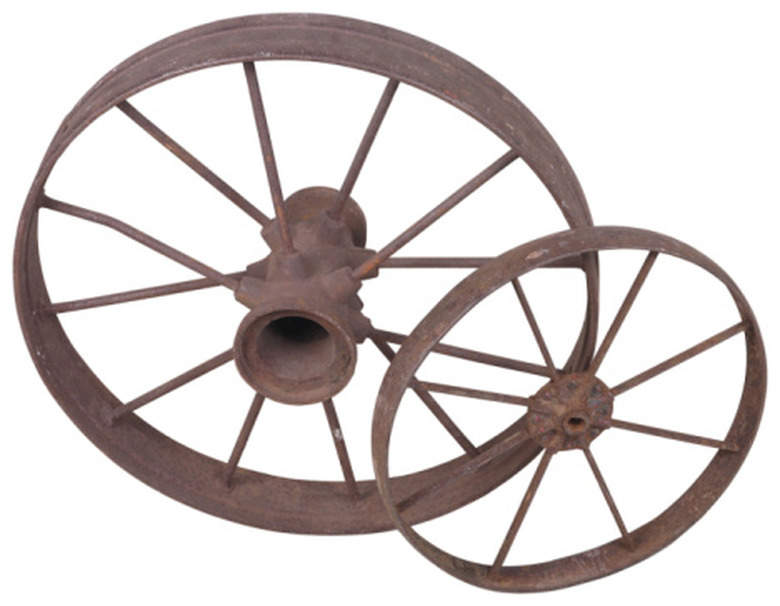How To Convert RPM To Surface Speed
When an object such as a wheel rotates along the ground, two different measurements describe its speed. The first, the object's angular velocity, describes its speed around its axis. This speed can either use the unit of degrees or radians per second or rotations per minute (rpm). The second measurement is the object's surface speed, which is the rate at which it covers a linear distance. The object's circumference, which is the distance it covers during a single rotation, relates these two measurements.
Step 1
Multiply the object's radius by 2 to calculate its diameter. For instance, if the wheel has a radius of 14 inches: 14 × 2 = 28 inches.
Step 2
Multiply the diameter by pi, which is approximately 3.142: 28 × 3.142 = 87.98 inches. This is the object's circumference.
Step 3
Multiply the circumference by the object's angular speed, measured in rpm. For example, if it rotates at 400 rpm: 87.98 × 400 = 35,192. This is the object's surface speed, measured in inches per minute.
Step 4
Divide this answer by 63,360, which is the number of inches in a mile: 35,192 ÷ 63,360 = 0.555. This is the surface speed in miles per minute.
Step 5
Multiply this result by 60, which is the number of minutes in an hour: 0.555 × 60 = 33.3. This is the object's surface speed in miles per hour.
Cite This Article
MLA
Menezes, Ryan. "How To Convert RPM To Surface Speed" sciencing.com, https://www.sciencing.com/how-8630774-convert-rpm-surface-speed/. 7 August 2017.
APA
Menezes, Ryan. (2017, August 7). How To Convert RPM To Surface Speed. sciencing.com. Retrieved from https://www.sciencing.com/how-8630774-convert-rpm-surface-speed/
Chicago
Menezes, Ryan. How To Convert RPM To Surface Speed last modified March 24, 2022. https://www.sciencing.com/how-8630774-convert-rpm-surface-speed/
